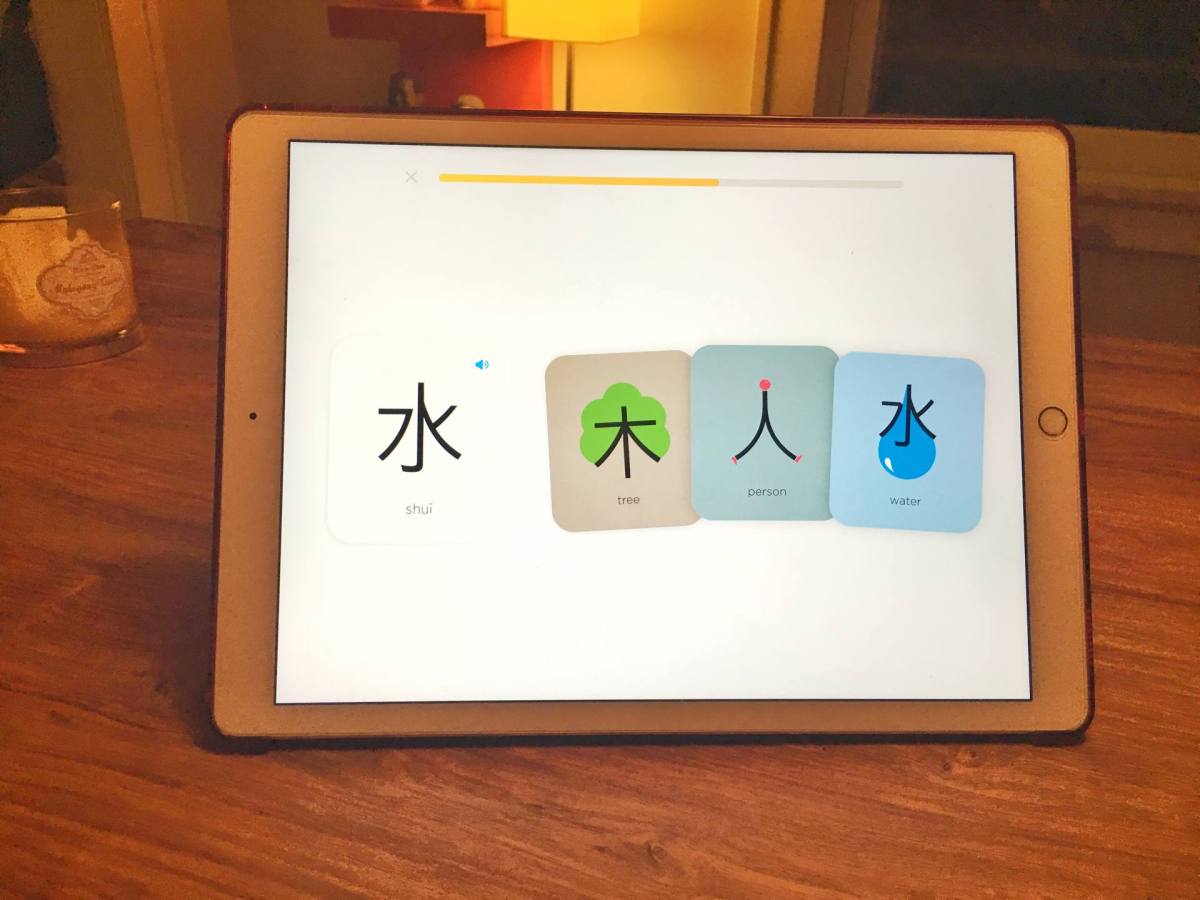
I have a love/hate relationship with Duolingo. There was a time a couple years ago where I sat and thought, “I have a great idea! I should start an app company that offers affordable courses in foreign languages using beautiful design.”
Cue to two hours later, when I discovered Duolingo. They had almost the exact same mission statement, plus a cool backstory, a really creative business model, and funding by people like Ashton Kutcher. Well, there went my idea.
I spent countless hours on Duolingo moving through every course they offered at the time: Spanish, Portuguese, Italian, French and German (I am a major foreign language nerd). The user experience of Duolingo is addictive, and delightful. But eventually I grew to have a few problems with it:
• It doesn’t prepare you that well to actually speak the language abroad. I went to Portugal and attempted to speak Portuguese the year I discovered Duolingo. Most of their experience is playing a game, with little effort to help you understand the “why” behind the language, or make you practice speaking out loud. I was not very well prepared, despite having passed all the levels.
• If you didn’t study the language in college, Duolingo is not going to be very comprehensive. I had never taken German in school, so the word order, syntax, noun declensions, etc. were totally new to me. Duolingo does zero explaining of why sometimes “book” is one word, and sometimes it’s another. To be fair though, this lack of context is a popular “immersion learning” style that is also favored by Rosetta Stone. Maybe most people don’t want/need to know those things.
• It seemed, initially, to prioritize European languages, and nerd languages like Klingon, over more commonly spoken languages. Again, to be fair, that may be because to get outside of Europe, it often would have to accommodate other writing systems, and it doesn’t have the infrastructure to teach you Chinese symbols, a syllabary, an alphabet, etc. Fast forward to now, when Duolingo offers Vietnamese, Hebrew and Russian, and is working on Korean, Hindi and even Yiddish*, to name a few. I can’t hate!
Before going to Brazil, I used Pimsleur audiobooks to practice Porgtuese, and had much more better luck actually speaking the language. (I also think Human Japanese is a great example of a language learning app that actually helps you understand the “why” and “how” of a language.)
So, as you can see, I love Duolingo, and am overly critical of it because I am so JEALOUS that they beat me to creating something I wanted to make.
I’ve been obsessively checking their incubator page to see when they’re going to release Chinese (Mandarin) and Japanese, which are my favorite languages. How will they tackle teaching you Chinese symbols, or Japanese, which uses Chinese symbols AND has two syllabaries of its own?
But alas, they were ahead of me yet again. Today they dropped Tinycards right out of thin air. Tinycards is a series of flashcards you can use to review and practice topics. Flashcards are pretty key for anyone working on Chinese and Japanese literacy, so they have basically built a whole new infrastructure to solve that problem. Smart!
AND, to make me hate (love) them even more, to do this they’ve partnered with Chineasy. Chineasy is a beautiful visual system that helps you understand the meaning of Chinese symbols. They start with radicals, which are common symbols that also make up part of more complicated symbols. Duolingo partnering with Chineasy makes so much sense I’m amazed I didn’t see it coming. Their design styles go so well together!
So nice work, Duolingo! You are ten steps ahead yet again.
Here’s my first look into the Tinycards experience. (Seeing how much Duolingo has grown since I first started, it would be unfair of me to “review” their new app just yet. )

Look at that! They have more flashcards than just languages. They’re expanding into science, geography and even dog breeds. Aw. (Also dog breeds was not there this morning when I downloaded it, meaning they’re probably adding new sets at rapid speed. I would be curious to see if they’ll start crowdsourcing topics the same way they crowdsourced their language courses.)

Here’s a look into how you learn hiragana, which is one Japanese syllabary. I wish it gave you the ability to draw/ trace the syllables and learn stroke order, but maybe it will down the line. Also I hope they add katakana (the other Japanese syllabary) before I go on my honeymoon in Japan in September!

Here are the Chinese flashcards featuring Chineasy’s illustrations. Pretty cool stuff.
The app works on my iPhone and iPad beautifully. Nice work Duolingo. I’m excited to see what comes out on this new platform, and how it works with your language learning experience. I will try to stifle my jealousy … for now!
- Not trying to imply that Yiddish isn’t a European language. It’s just one of the most interesting/rarely offered languages, so it’s cool that Duo is working on it. If you’re particularly interested in Yiddish, there’s a whole graphic novel called Yiddishkeit
about it, featuring work by people like Harvey Pekar.
